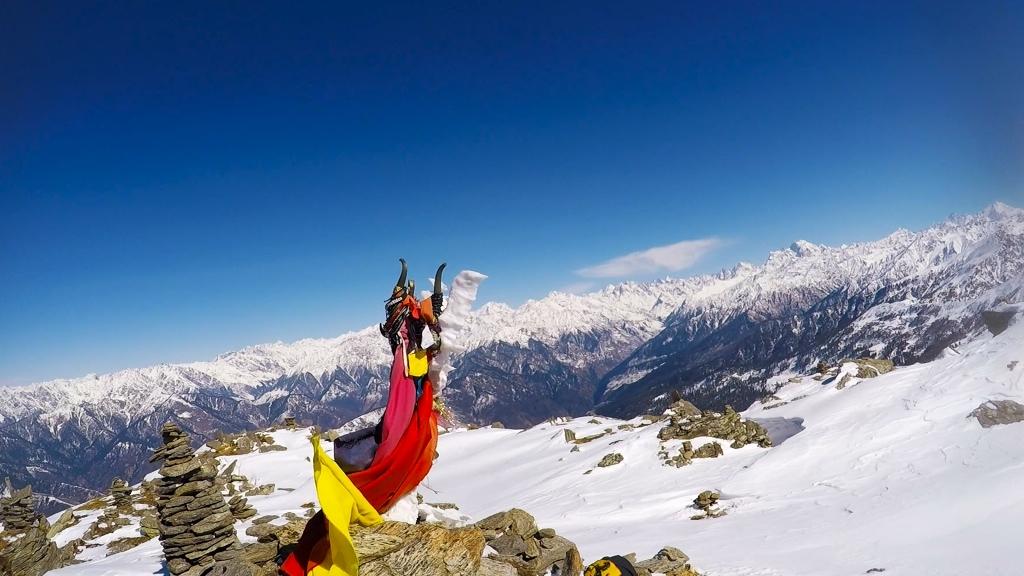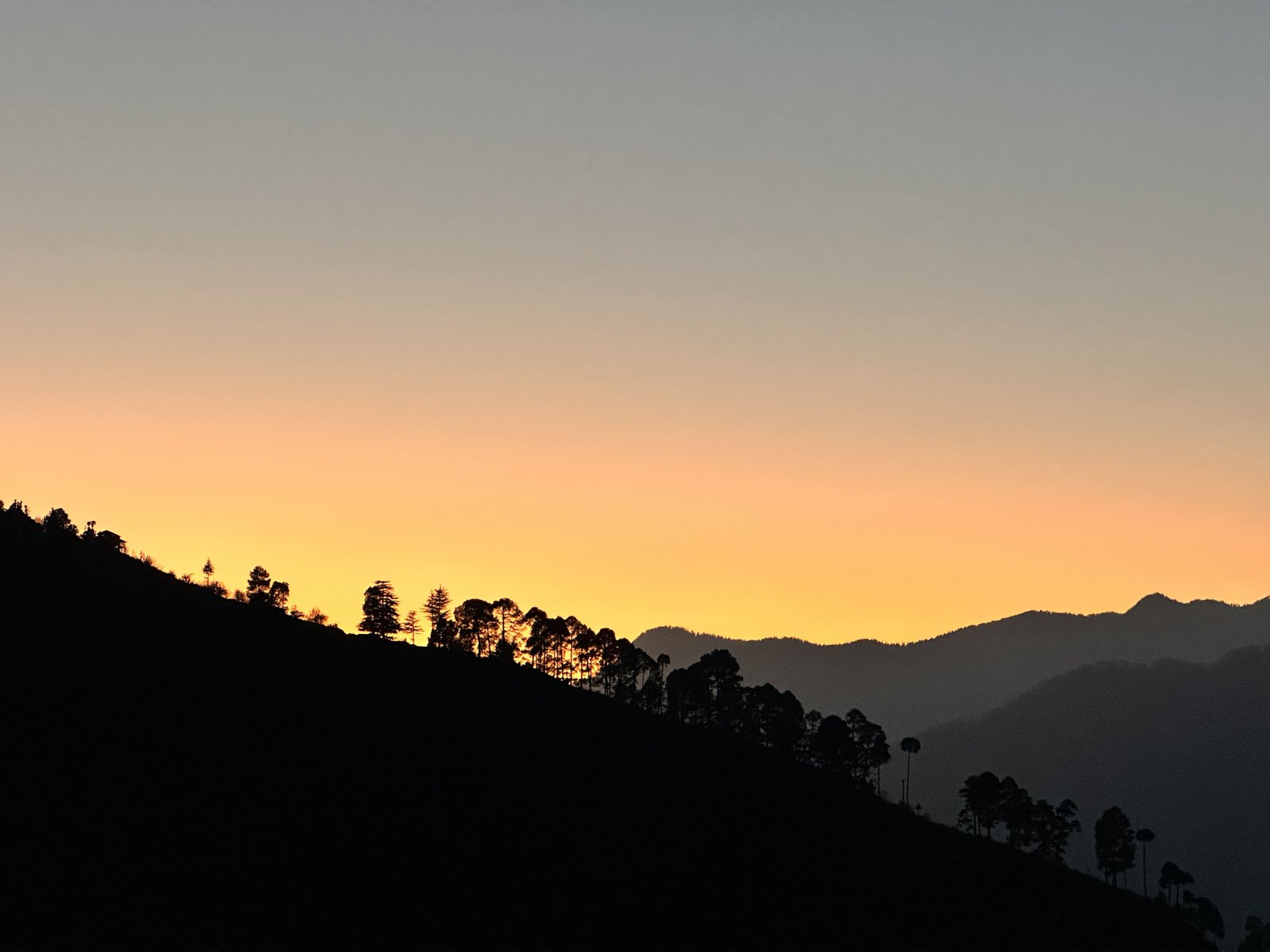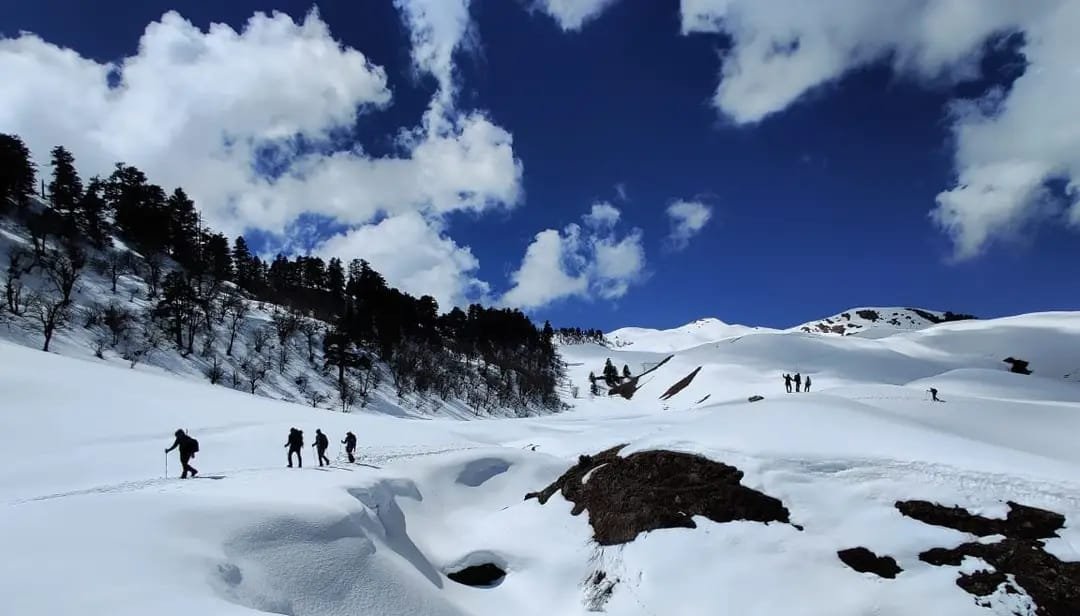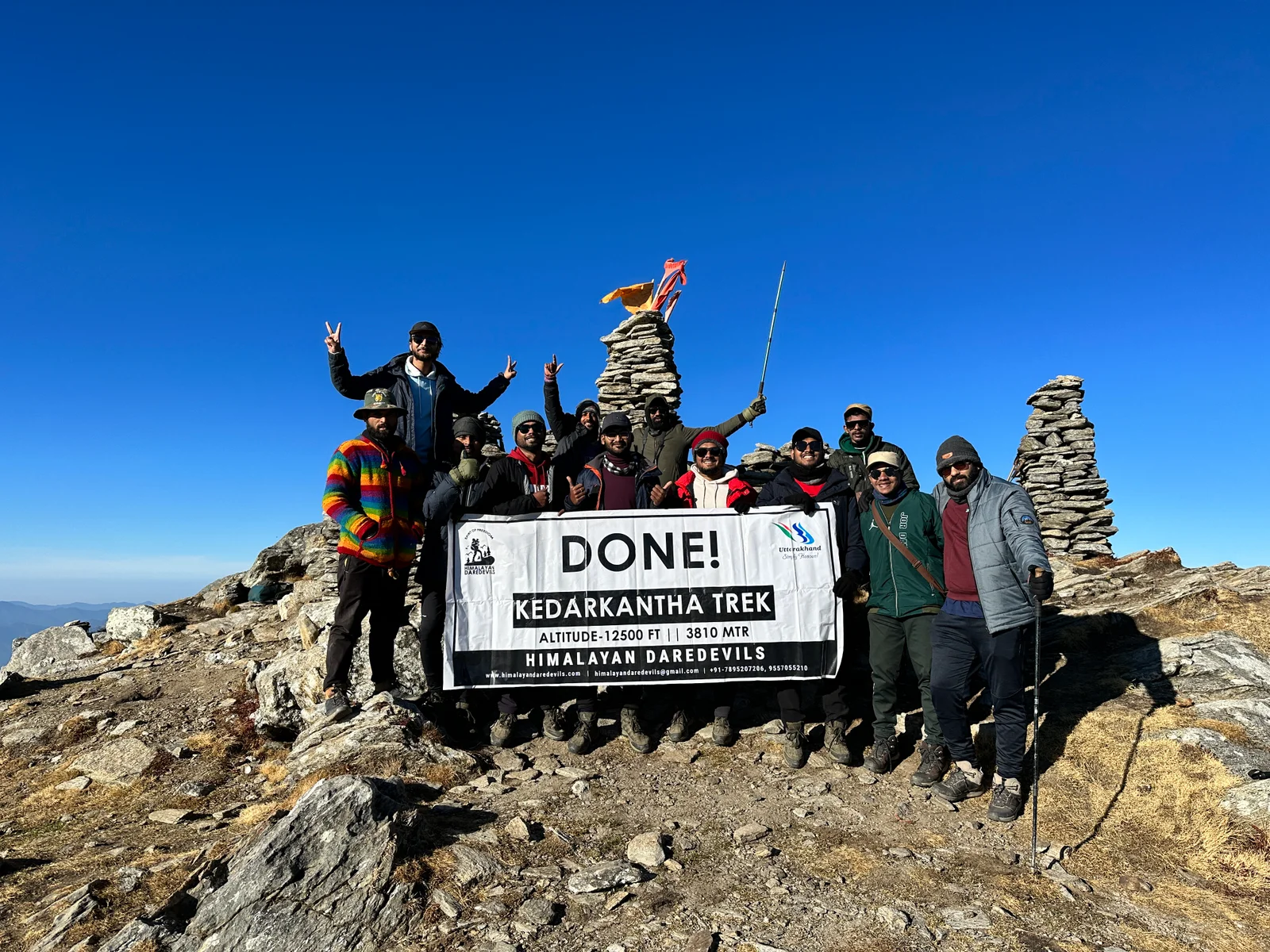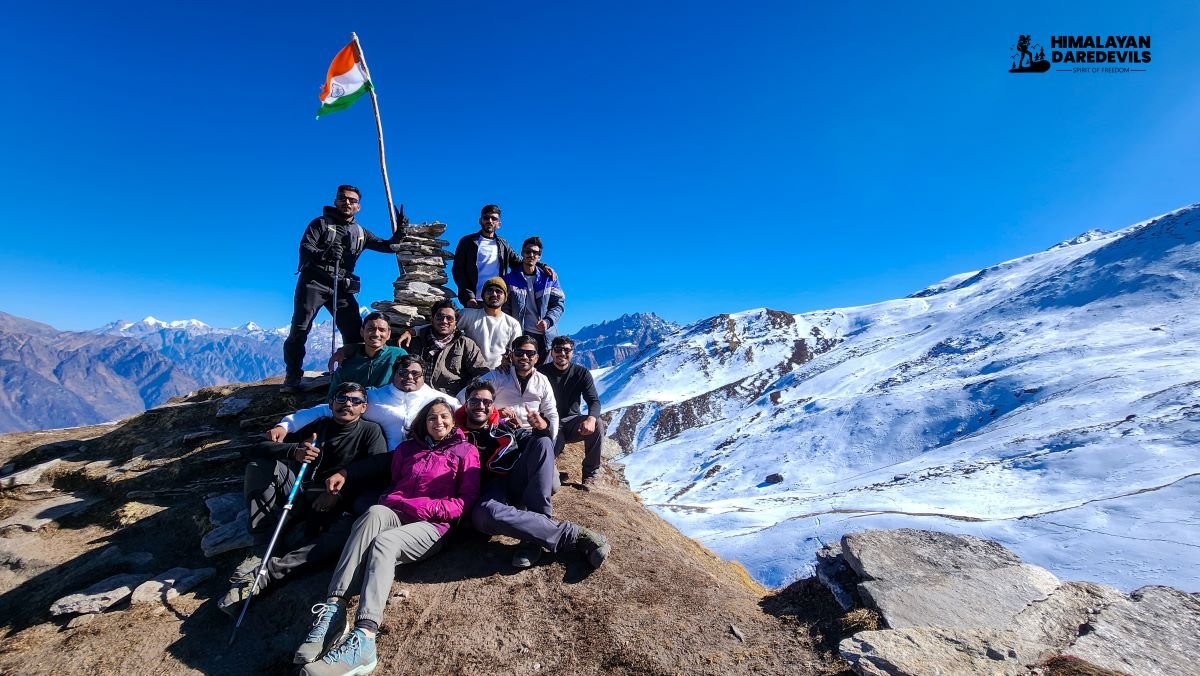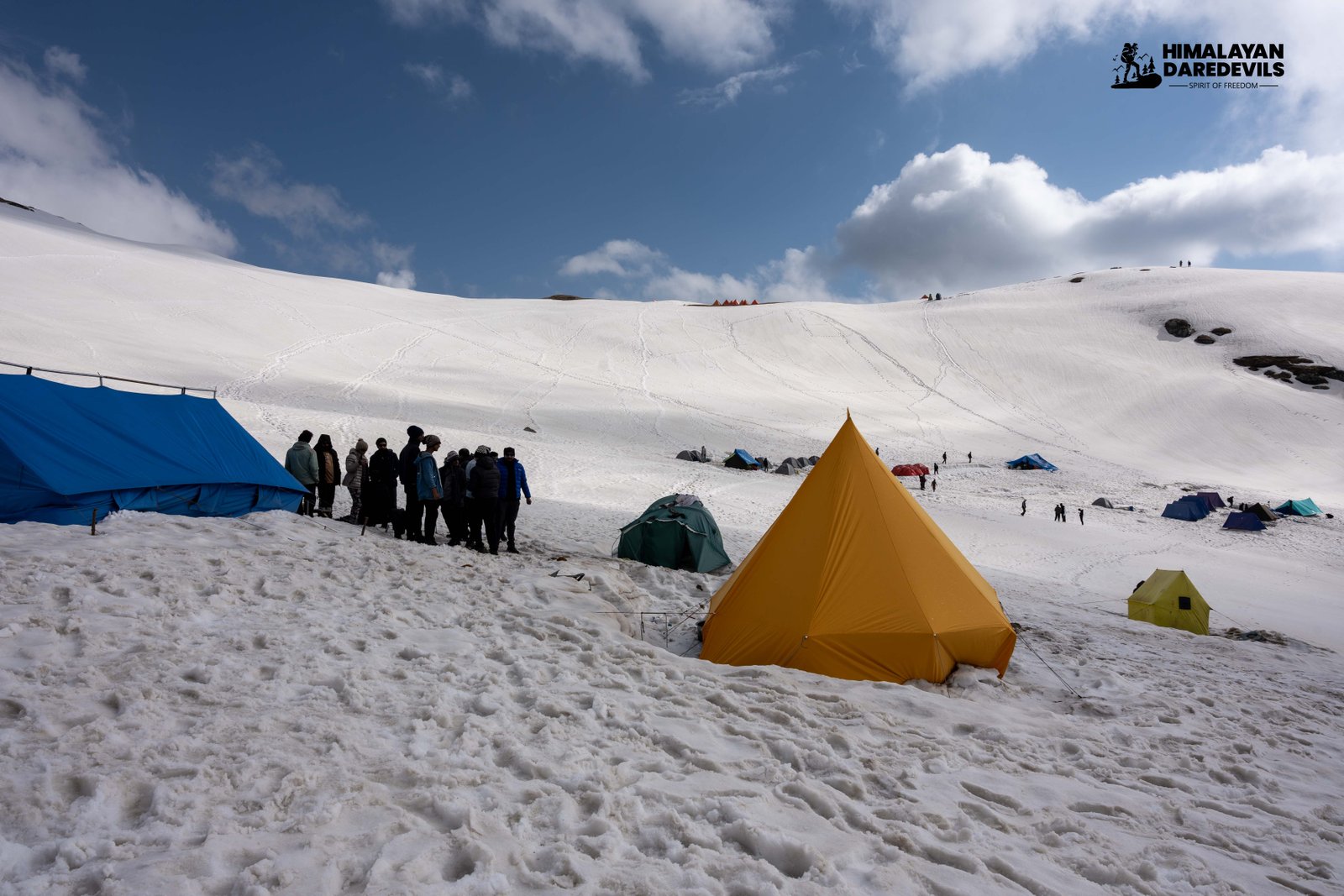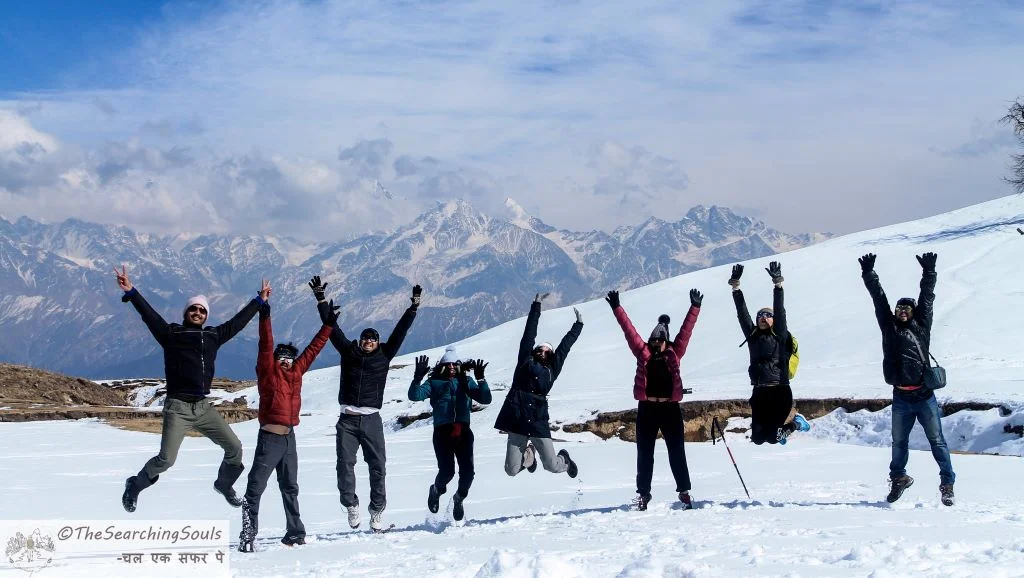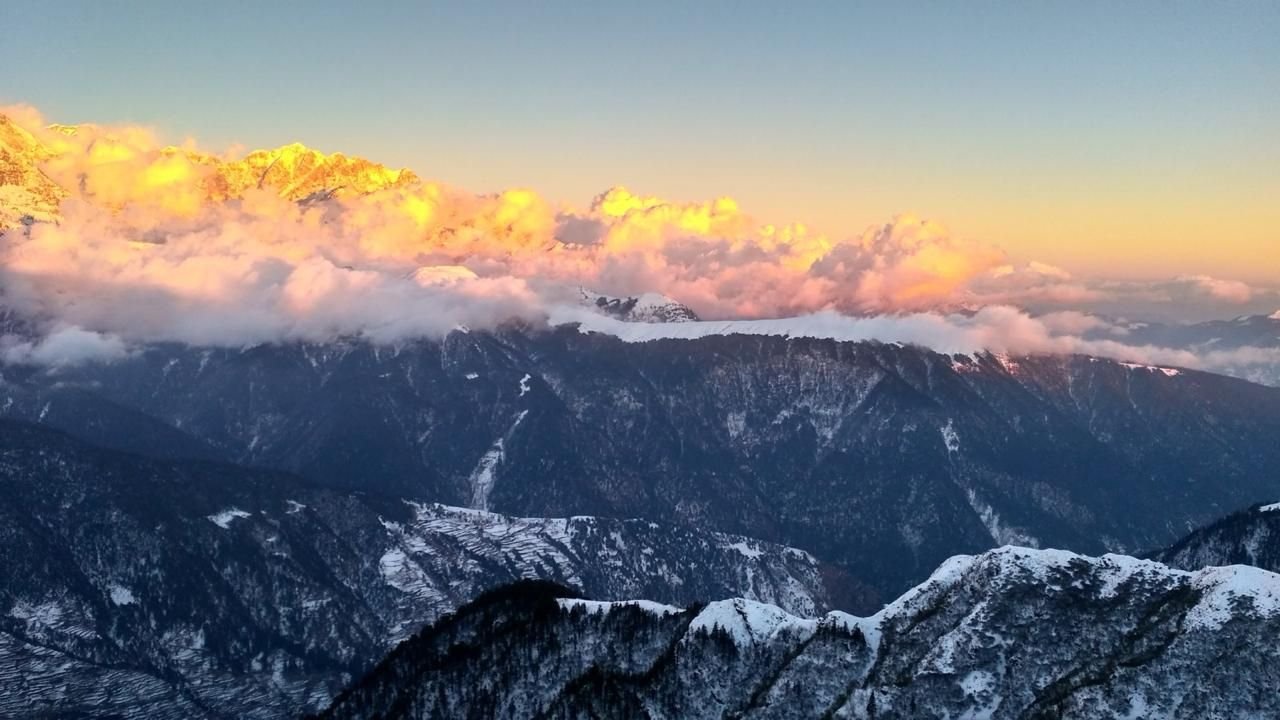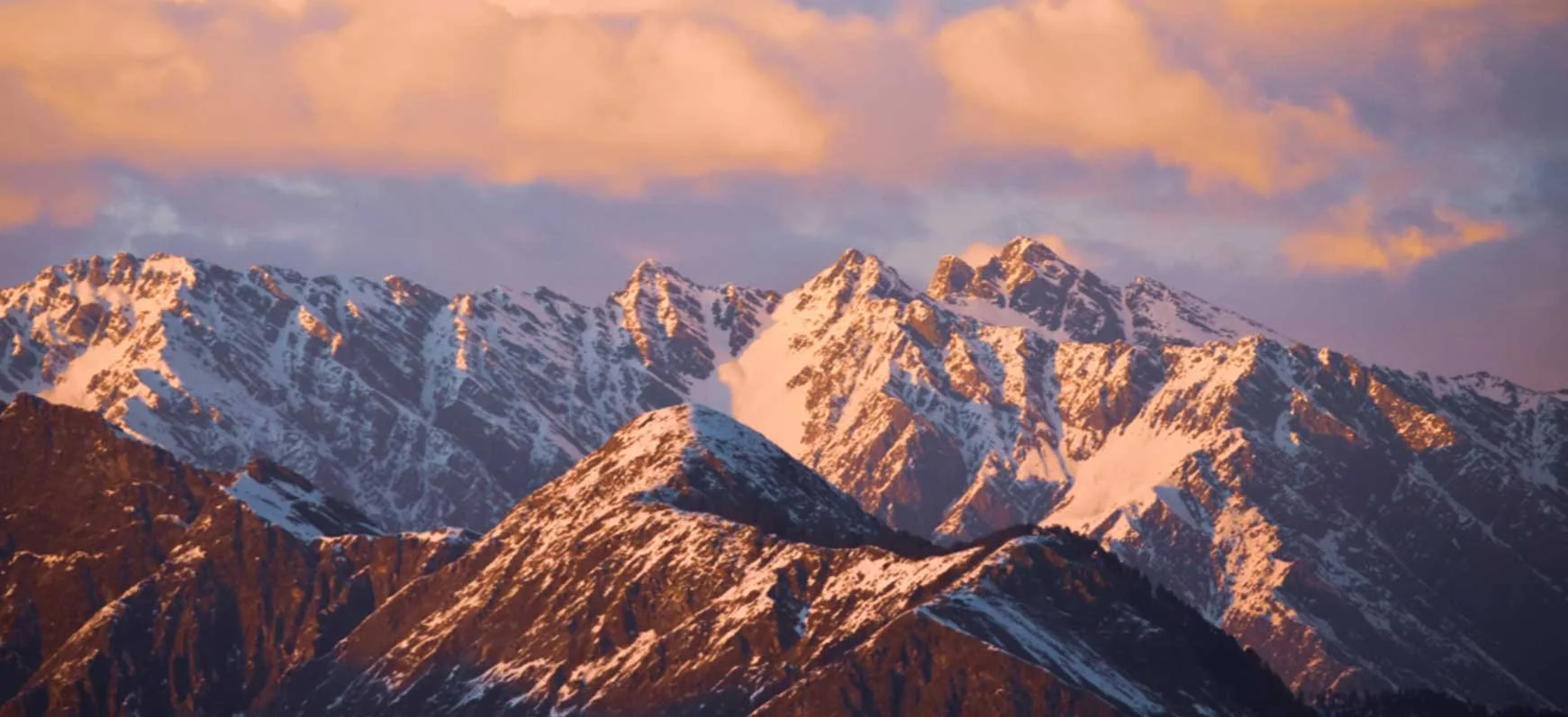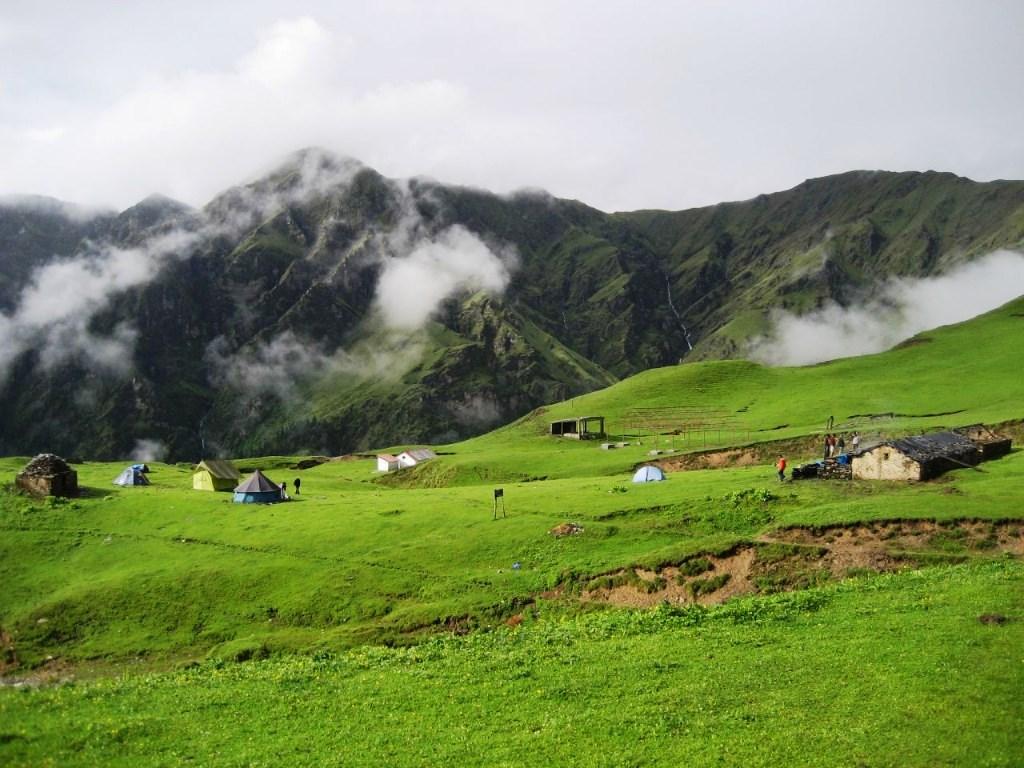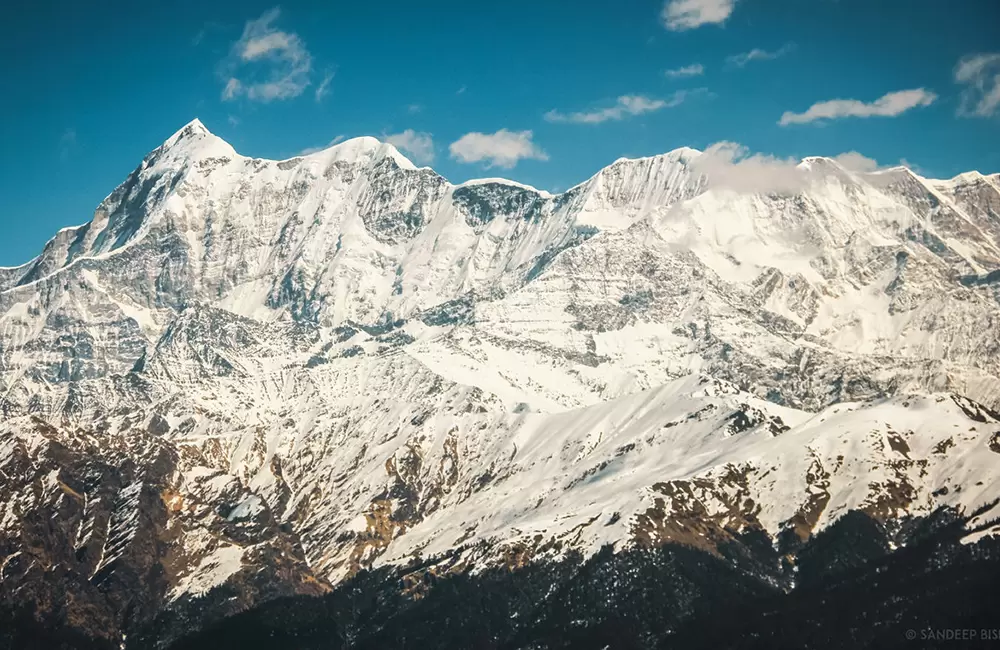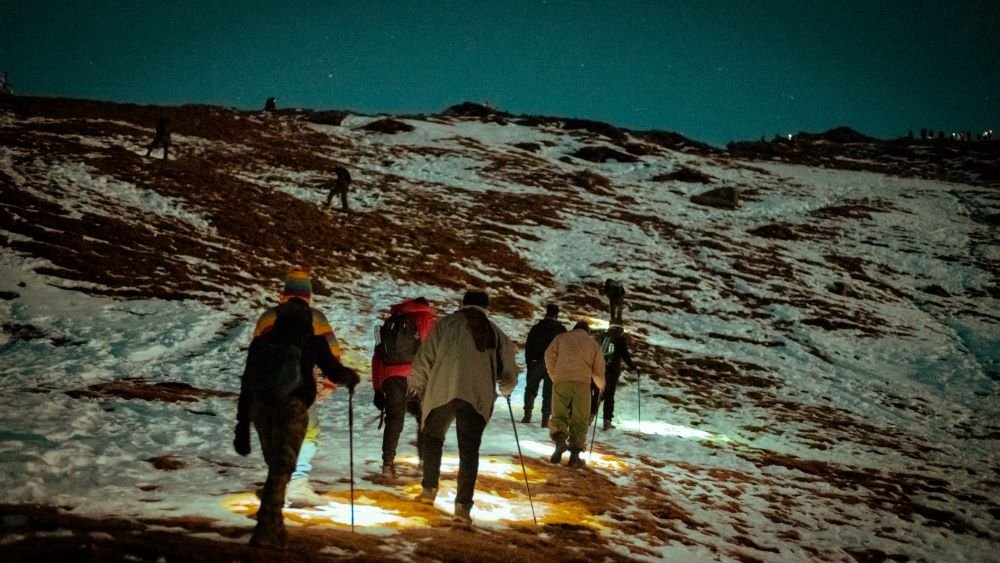15 October 2025
Kedarkantha Trek is one of the most popular winter treks in Uttrakhand and it is known for its snow-covered trails and Himalayan scenery. The trek takes you from the dense alpine forests to open green meadows and all along the way you see glimpses of the Himalayan peaks, from between the tall green pine trees and from the open meadows. On finally reaching the highest point you get to see the mesmerizing Kedarkantha Summit View. At 12,500 ft, iconic peaks like Bandarpoonch, Swargarohini, and Kalanag can be seen in their full glory, their snow laden peaks shining under the clear blue sky.
List of Famous Peaks Visible from Kedarkantha Trek
Here is a detailed look at the peaks visible from the Kedarkantha Summit:
1. Bandarpoonch
Altitude: 6,316 meters (20,725 ft)
History & Significance: Bandarpoonch or Bandarpunch meaning ‘Monkey’s Tail’, is a mountain massif (A mountain massif in simple words is a mountain with more than one peak), it has three peaks which come together to resemble the tail of a monkey. The name is inspired by the mythological tale in which Hanuman, the monkey god, extinguishes his tail, after it catches fire.
How to Spot: From the Kedarkantha Summit Banderpoonch shines with its distinct curving ridge. You will notice the ‘tail-like’ formation on the horizon making it easy to spot. The peak is often snow-capped and shines under the sunlight on a clear day.
2. Swargarohini Peaks I-IV
Altitude: ~6,252 meters (20,520 ft)
History & Significance: According to the Mahabharat, these are the peaks that represent the path that the Pandavas took to heaven, this adds a mythological weight to these peaks. The word ‘Swargarohini’ means ‘ascending to heaven’ in Sanskrit.
How to Spot: The peaks stand at the north-east and are jagged and sharp in shape. These peaks form a stunning chain that make them stand out aganst the distance snow-covered ridges. The sunlight casts a golden hue, tarika the dramatic look.
3. Kalanag (Black Peak)
Altitude: 6,387 meters (20,958 ft)
History & Significance: The Black peak is one of the tallest peaks visible from the Kedarkantha Summit point. The peak is the part of the larger Tons Glacier region and its dark rocky summit contrasts sharply with the surrounding snow.
How to Spot: Look to the northwest and you will see the steep, rocky front of the mountain standing out against the smooth snow-covered mountains next to it
4. Ranglana
Altitude: ~5,889 meters (19,323 ft)
History & Significance: The peak is considered sacred by the local communities of nearby villages like Dhaundan and Supin and is known for its rugged beauty and challenging trekking terrain.
How to Spot: From Kedarkantha Summit point the peak is visible as a sharp and pointed. It stands slightly lower to the Swargrohini peaks but is still prominent in the skyline.
5. Rupin-Supin Range
Altitude: 5,500 to 6,000 meters
History & Significance: These ranges form part of the greater Garhwal Himalayan system, famous for rugged terrain, glaciers, and alpine lakes. They are popular among trekkers for extended Himalayan adventures.
How to Spot: These are visible to the east of Kedarkantha, forming long ridgelines stretching toward Yamunotri.
6. Gangotri & Yamunotri Ranges
Height: 6,000–7,000 meters
History & Significance: Gangotri is the origin of the Ganges, and Yamunotri is the origin of the Yamuna. Both hold immense religious and cultural significance in Hinduism.
How to Spot: From the Kedarkantha summit, these peaks are visible in the far distance to the northwest. Binoculars help to distinguish the glaciers and ridges.
7. Draupadi Ka Danda
Height: ~5,700 meters (18,700 ft)
History & Significance: Named after Draupadi from the Mahabharata, it’s part of the mythologically rich landscape of the Garhwal Himalayas.
How to Spot: Its distinctive shape can be identified on clear days, often appearing as a sharply rising ridge on the western horizon.
8. Kinner Kailash (Himachal Pradesh)
Height: 6,050 meters (19,849 ft)
History & Significance: A sacred peak in Himachal Pradesh, Kinner Kailash is often associated with Lord Shiva and pilgrimage routes.
How to Spot: Only visible on very clear days due to distance; it appears to the north-west, adding a mystical backdrop to the Kedarkantha view.
Tips to Spot Peaks Effectively:
Early Morning: The best time to spot the majestic Himalayan peaks is early in the morning when the sky is clear and the golden sunlight shines on the white snowcapped mountain peaks.
Clear Weather: Winter and Spring months are the months when the sky is clear and the weather makes the distant peaks visible.
Binoculars ot Telephoto Lens: To see the distance peaks like Kinnaur Kailash you can carry a good pair of Binoculars.
Good Guides: Local guides can point and help you with recognising lesser known peaks and also share the folklore assosiated with them.
Best Time to See The Peaks Clearly From Kedarkantha:
To get the best view of the peaks surrounding the Kedarkantha Summit you must plan ahead and visit the trek in the season with best visibility:
Winters (December to February): Best Peak Visibility
Why: In the winters the sky is crystal clear and offers unobstructed panoramic views of the majestic Himalayan peaks.
Landscape: You will find the trek covered in snow, from tall pine trees to open green meadows all under the blanket of freshly fallen snow.
Temperature: Cold, the temperature during the winters ranges from -5°C to 10°C during the day; nights can drop below -10°C.
Highlights:
Swargarohini, Bandarpunch, Kalanag, and Ranglana are most visible.
Snow-covered slopes enhance contrast, making peaks easier to identify.
Ideal for photography, snow trekking, and experiencing the “winter wonderland” feel.
Spring (March to May): Best for Moderate Trekking
Why: Snow begins to melt and the weather becomes milder the trail is much easier to walk on
Landscape: You will find during this season the blooming alpine flowers, green meadows and partially snow-covered peaks.
Visibility: Peaks are visible but sometimes partially covered by clouds, especially in late spring.
Highlights:
Great for trekking without heavy snow gear.
Peaks are still distinct in early spring before the cloud cover increases.
Autumn (October to November) – Good Alternative
Why: Clear skies return after the monsoon, making peaks highly visible again.
Landscape: Crisp air, dry trails, and golden hues in forests.
Temperature: Pleasant, ranging from 5°C to 15°C during the day.
Highlights:
Peaks are clearly visible, similar to winter but without heavy snow.
Excellent for trekking, photography, and panoramic views.
Monsoon (June to September) – Not Recommended
Why: Heavy rainfall causes low visibility, slippery trails, and leeches in lower regions.
Landscape: Green but often shrouded in clouds.
Highlights:
Peaks like Swargarohini and Bandarpunch may be hidden in clouds most of the time.
Landslides and slippery trails make trekking risky.
The Kedarkantha Trek offers some of the most unforgettable views of the iconic Himalayan peaks. From the summit point trekkers can spot legendary peaks like Swargarohini, Bandarpunch, and Kalanag, each with its own story and grandeur. Each of these mountains carry a story of their own and to get the best visibility one must choose the right time to visit the trek and for expert guidance, safe trekking, and a truly immersive Himalayan adventure, choose Himalayan Daredevils as your perfect companion.
